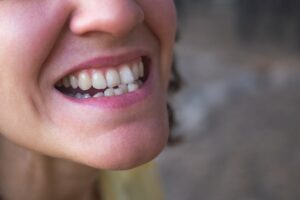 Teeth shift naturally over time. Though it’s normal, it can be uncomfortable, compromise the appearance of your smile, and even put your dental health at risk. Identifying the early signs of teeth shifting can help you address the issue before it becomes advanced.
Teeth shift naturally over time. Though it’s normal, it can be uncomfortable, compromise the appearance of your smile, and even put your dental health at risk. Identifying the early signs of teeth shifting can help you address the issue before it becomes advanced.
What Causes Teeth Shifting?
The most common cause of teeth shifting is the aging process. Bone, ligaments, and gum tissue weaken with age, which may cause the teeth to move. However, other factors can also lead to teeth shifting, including:
- Tooth loss: When a tooth is missing, the adjacent teeth may start to shift inward toward the gap.
- Oral conditions: Conditions that affect the gums and teeth like tooth decay and periodontal disease can compromise the support for your teeth, contributing to shifting.
- Lifestyle habits: Habits that affect the mouth, like grinding the teeth or using teeth to open bottles, place undue pressure on the teeth and may cause shifting.
Warning Signs of Teeth Shifting
Warning signs that your teeth are shifting include:
- Midline change: Proper tooth alignment involves the two upper and lower front teeth being positioned at the center of your eyebrows and nose. If this midline moves, it’s a sign that your teeth are moving.
- Noticeable movement or loosening: Noticeable movement or loosening of the teeth is one of the primary signs of shifting.
- Gaps: Gaps between teeth can indicate teeth shifting and/or periodontal disease.
- Crowding: Tooth overcrowding, which causes the teeth to overlap or become tightly packed, can result from teeth shifting.
- Bite changes: The “bite” refers to how your upper and lower teeth fit together. Shifting teeth can cause your bite to shift and become irregular.
- Pain or sensitivity: If you start to experience tooth pain or increased sensitivity, tooth shifting is one possible cause.
At Dental Implant Solutionz, we offer a range of cutting-edge treatments to preserve your smile and oral health. Contact us today to schedule an appointment!
